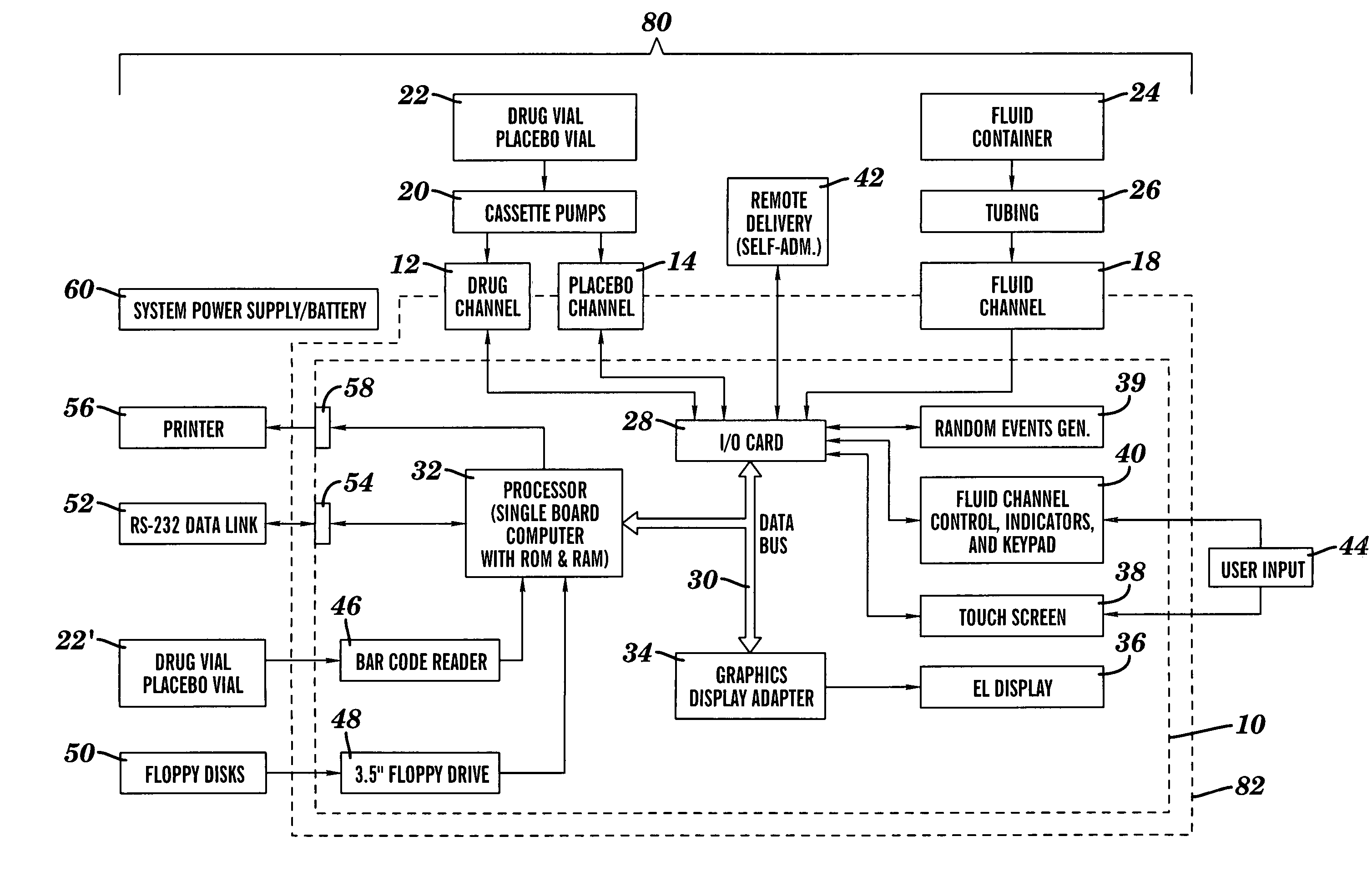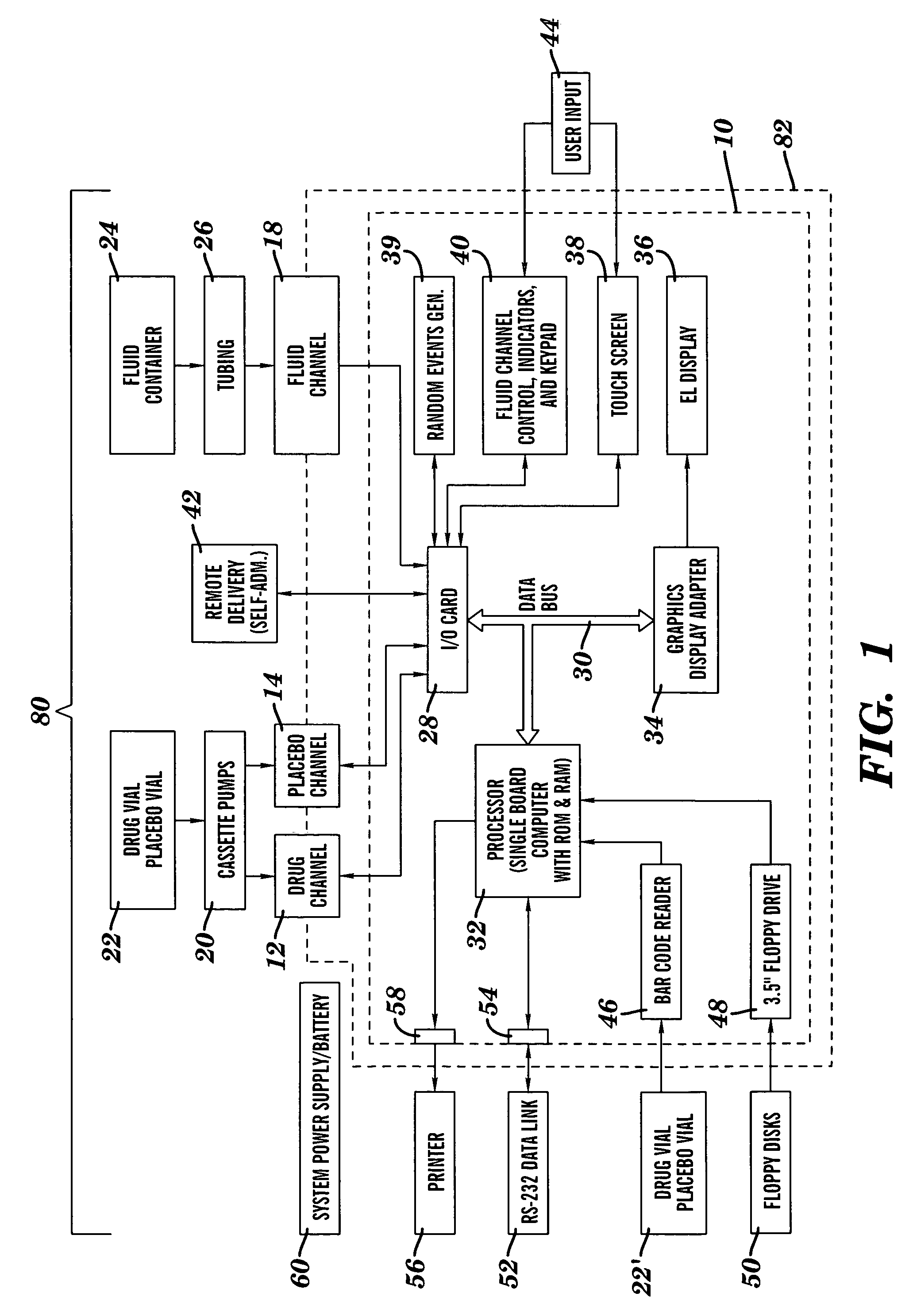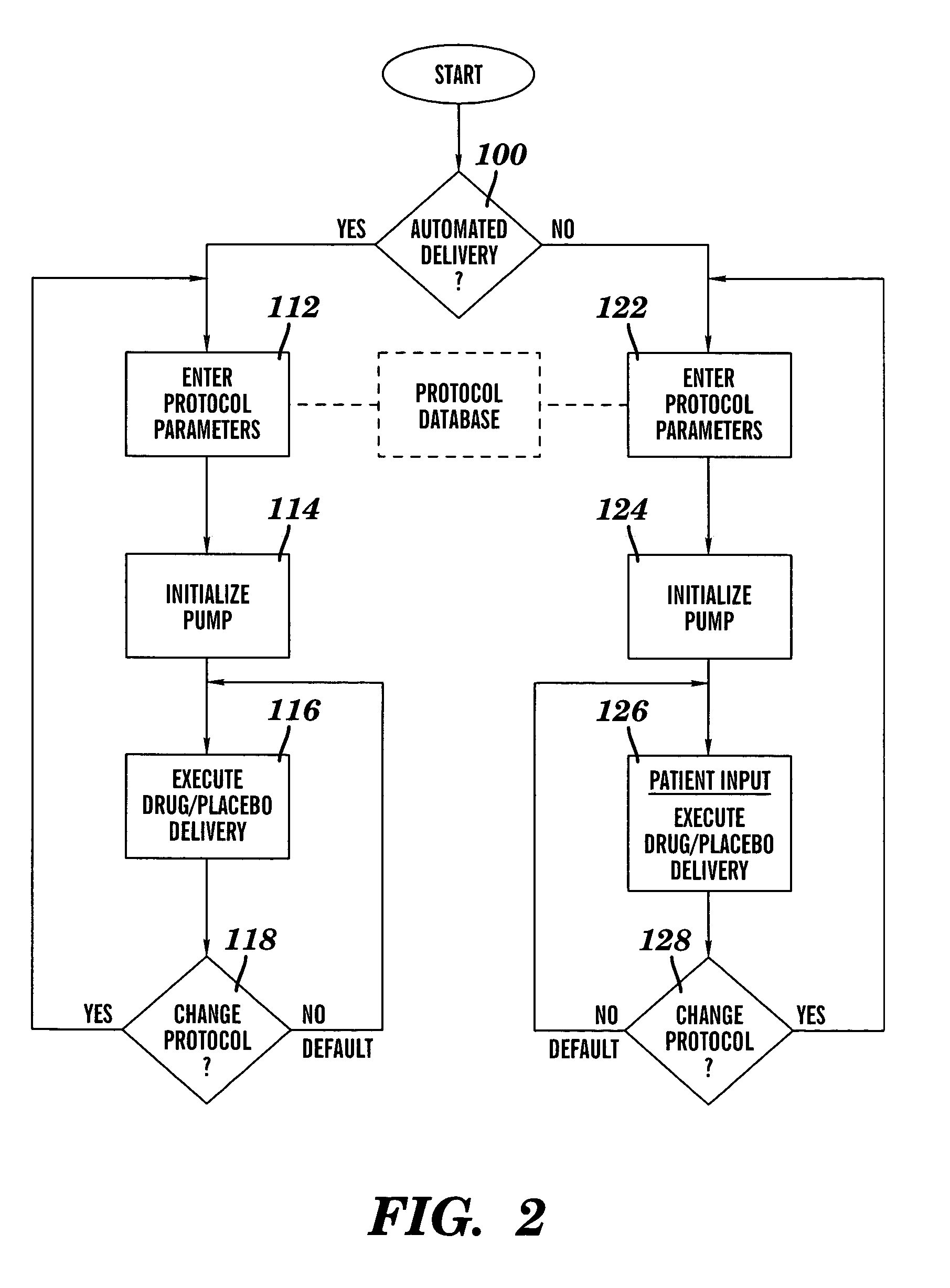Method and device for administering medication and/or placebo
a technology for bolus and placebo, applied in the direction of infusion syringes, process and machine control, instruments, etc., can solve the problems of inability to effect a partial reinforcement schedule of drug delivery, inability to provide continuous reinforcement of drug infusion systems, and inability to achieve partial reinforcement of drug delivery schedules, etc., to achieve the effect of potentiating the effect of a low, ineffective, or minimally effective dose of an active drug, increasing the amount of drug
- Summary
- Abstract
- Description
- Claims
- Application Information
AI Technical Summary
Benefits of technology
Problems solved by technology
Method used
Image
Examples
Embodiment Construction
[0016]The present invention relates generally to a control device for a drug delivery system which is equipped for delivery of multiple fluids from multiple fluid sources, either according to an automated mode or according to a self-administration mode. Specifically, the control device is capable of executing delivery of a drug according to a partial reinforcement schedule whereby a placebo or ineffective dose of the drug is provided to a patient, either in whole or in part, during one or more drug delivery events carried out according to a set of program instructions.
[0017]As used herein, the term “partial reinforcement schedule” is intended to mean reinforcement of a conditioned stimulus with an unconditioned stimulus between zero and 100 percent of the time in which a conditioned stimulus occurs. In this case, a conditioned stimulus occurs as a delivery event executed by the drug delivery system. The actual conditioned stimulus can take the form of audible, visual, and / or tactile...
PUM
 Login to View More
Login to View More Abstract
Description
Claims
Application Information
 Login to View More
Login to View More - R&D
- Intellectual Property
- Life Sciences
- Materials
- Tech Scout
- Unparalleled Data Quality
- Higher Quality Content
- 60% Fewer Hallucinations
Browse by: Latest US Patents, China's latest patents, Technical Efficacy Thesaurus, Application Domain, Technology Topic, Popular Technical Reports.
© 2025 PatSnap. All rights reserved.Legal|Privacy policy|Modern Slavery Act Transparency Statement|Sitemap|About US| Contact US: help@patsnap.com



